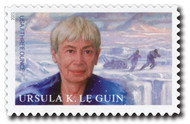The Evolution and Intricacies of Die Cut Postage Stamps
Posted by Mystic Stamp Co. on 27th Jun 2024
Die cut postage stamps have revolutionized the way we perceive and interact with our mail. These meticulously crafted pieces of art not only serve a functional purpose but also add a touch of creativity and uniqueness to postal items. But what exactly are die cut stamps, and how have they changed the landscape of philately?
What Are Die Cut Postage Stamps?
Die cut stamps are postage stamps that have been cut from a sheet using a die, a specialized tool designed to cut through materials with precision. Unlike traditional stamps, which are usually perforated, die cut stamps have smooth, shaped edges that follow the design of the stamp itself. This method allows for a variety of shapes and sizes, making each stamp a unique piece of art.
History of Die Cut Stamps
The introduction of die cut stamps marked a significant advancement in stamp production. The first die cut stamps appeared in the 1990s, primarily in response to the need for self-adhesive stamps. These stamps, unlike their gummed counterparts, required a different method of separation. Perforations, the traditional method, were not suitable for self-adhesive stamps, leading to the development of die cutting techniques.
The Process of Die Cutting
The process of creating die cut stamps is both intricate and fascinating. It begins with the design of the stamp, which is then transferred onto a metal die. This die is used to cut the stamps from a larger sheet, creating precise shapes without the need for perforations. The die cutting process allows for greater flexibility in stamp design, enabling the creation of stamps in various shapes, such as circles, triangles, and even more complex forms.
Advantages of Die Cut Stamps
One of the main advantages of die cut stamps is their aesthetic appeal. The smooth, shaped edges provide a clean and modern look, making them highly attractive to collectors and the general public alike. Additionally, die cut stamps are easier to separate from their backing paper, reducing the risk of damage when handling.
Die cut stamps are also more durable. The absence of perforations means there are no weak points that could tear during use. This durability makes them ideal for everyday postal use, ensuring they arrive at their destination intact and looking pristine.
Collecting Die Cut Stamps
For stamp collectors, die cut stamps offer a new dimension to their collections. The variety of shapes and designs adds an element of excitement and challenge to philately. Collectors often seek out limited edition die cut stamps, as their unique shapes and designs can make them highly desirable and valuable.
Notable Die Cut Stamps
Over the years, several notable die cut stamps have been issued by postal authorities around the world. For instance, the United States Postal Service has released several die cut stamps featuring iconic American symbols and themes. One of the most popular examples is the 2000 Love stamp, which features a heart shape, symbolizing affection and romance.
Another notable example is the Canadian Maple Leaf die cut stamp, which features the country's national symbol. This stamp showcases the intricate detail and precision that can be achieved through die cutting, making it a favorite among collectors.
The Future of Die Cut Stamps
As technology continues to advance, the future of die cut stamps looks promising. With improvements in printing and cutting technologies, we can expect to see even more innovative and intricate designs in the years to come. Postal authorities around the world are likely to continue exploring the possibilities of die cutting, creating stamps that not only serve a functional purpose but also captivate and inspire.
Conclusion
Die cut postage stamps represent a significant evolution in the world of philately. Their unique shapes, aesthetic appeal, and practical advantages have made them a favorite among collectors and postal users alike. As we look to the future, die cut stamps will undoubtedly continue to push the boundaries of design and creativity, adding a touch of artistry to our everyday mail.

